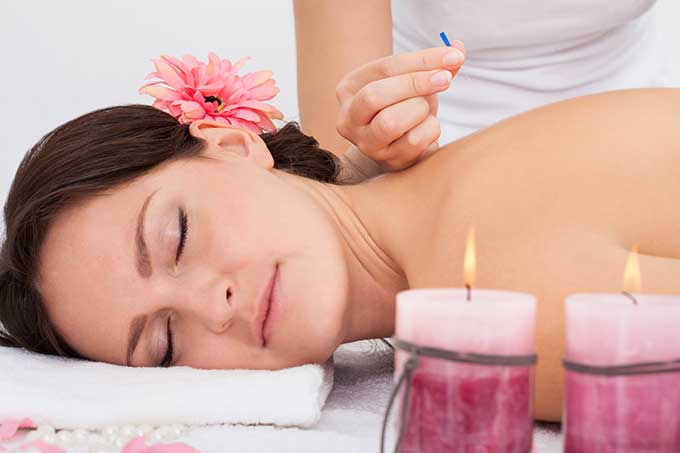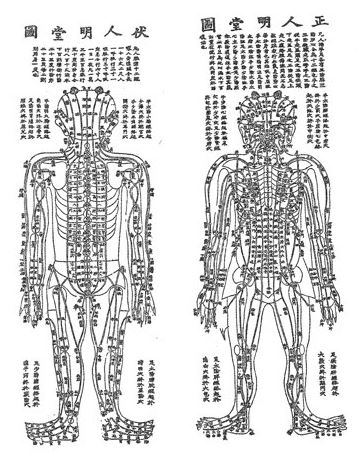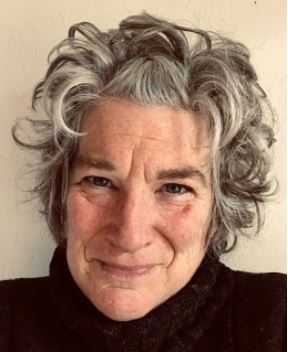Acupuncture and Moxibustion
Inner Melbourne Acupuncture Clinic
Over 30+ years experience
Acupuncture Treatment
For patients in Melbourne who are seeking acupuncture treatment, our AHPRA registered acupuncturist, Mattie Sempert (PhD) provides a selection of East Asian medical approaches that can—when appropriate—offer a drug-free alternative to conventional medicine.
At our acupuncture clinic we offer a unique service that combines both alternative and conventional Western Medical Techniques to achieve the best results for a variety of conditions.
Our expert Acu-Moxa Therapist, Mattie Sempert, likes to work in conjunction with our GPs as well as network with other health care practitioners as a way to achieve the best outcome for all of her clients.
It is possible that acupuncture can reduce your reliance on some medications, so it is important that your GP is aware that you are receiving acupuncture treatment.

Pricing Information
For your first visit for acupuncture, please arrive 10 minutes early to fill out the intake form.
After the initial series of acupuncture treatments, Mattie often encourages a “tune-up” visit every couple of months to help off-set the insidious build-up of stress and tension.
Initial Visit
-
*The initial visit takes 55 minutes
-
*For the first visit please arrive 10 minutes early to fill out the intake form.
Follow-up Visits
-
*Follow-up acupuncture sessions are 45 minutes.
Acupuncture Benefits
- Acupuncture may help patients manage a range of symptoms including pain, stress, anxiety, headaches and fatigue
- Management of pain, stress and fatigue related to some autoimmune disorders, in consultation with other treating health practitioners
- The management of pain, fatigue and nausea related to many chronic diseases
- Management of vomiting or nausea arising from chemotherapy
- Chronic pain related to depression by managing the underlying chronic pain
- Pregnancy related pain
- Nausea and vomiting
What is Acupuncture?
The practice of acupuncture began well over 3 thousand years ago in China. The traditional Chinese name for the practice is zhēnjiǔ (zhēn = to prick; jiǔ = to burn). Much like how a rope is made stronger as more strands are gathered together, needles combined with moxa produce the most potent effects. So, technically, a more accurate term for the practice should be Acu-Moxa Therapy.
Simply put, the aim of zhēnjiǔ, or Acu-Moxa therapy, is to move stuck qi (and blood and fluids). There is a well-known saying amongst acupuncturists: Where there is pain, there is no free flow; Where there is free flow, there is no pain. To stay alive, our bodies are always seeking dynamic homeostasis, and acupuncture nudges bodies towards this dynamic state when the body’s own amazing intelligence has the capacity to look after itself (a quivering state also called autonomic flexibility). All made possible with gentle twirls of super fine needles.

Yet needles and moxa are just two of several methods developed in ancient China. For example, the Taoists used several methods as an active way to preserve health and address disease. These include herbal medicine, diet, massage and cupping, exercise, meditation in the form of qi gong and tai chi, divination practices such as the I Ching, and geomancy or Feng Shui, the ‘art of placement.’ For the Taoists, all of these practices became a lived philosophy: body and mind inseparable, one and the same. But this was long before the Western philosopher, Rene Descartes, split the body off from the mind, a separation that we in the Western world are haunted by.
Over time, other countries have adapted and modified the principles and practice that came from ancient Chinese medicine to fit their own cultures. Japan, Korea and Vietnam are examples of East Asian countries that have developed their own approaches. So to call the therapy East Asian Medicine would be more accurate and inclusive of the different approaches. What they all have in common is the concept of qi.
Mattie Sempert (PhD) | Acupuncturist

Registered Acupuncturist (AHPRA)
Reg. CMRB Vic.
Mattie graduated from the New England School of Acupuncture (Boston) in 1991, and has been practicing—qi-fully! —ever since. Considering her 30+ years of practice, you are in the care of highly skilled and experienced hands. Her dynamic treatment style has been influenced by the more interactive, hands-on, and soothing Japanese techniques (as compared to the more commonly practiced TCM style of acupuncture) where it is crucial to find the live spots to treat. This palpation-based approach requires your feedback and aims for you to feel a distinct felt shift at the end of a treatment.
As a clinician, Mattie considers herself to be a “Generalist” who specialises in relieving all sorts of painful conditions as well as the many symptoms and conditions that can arise from chronic stress. These can include various ‘functional’ problems, such as those related to digestion, sleep, prolonged tension and anxiety. Pain, in its many annoying forms (symptoms such as tension and migraine headaches, menstrual pain, bursitis, muscular aches and stiffness, irritable bowel, arthritis, etc), can be eased through acupuncture and its accompanying technique, moxibustion.
Mattie’s nimble fingers are especially adept at performing a special kind of moxibustion, called tonetskyu, or penetrating moxa. She also teaches tonetskyu to fellow practitioners, along with other Japanese palpatory approaches. Over the years she has kept up a strong interest in working with stubborn, poor healing scars. As a sideline to her human-based practice, she also enjoys treating dogs with dodgy hips.
Besides her clinical and teaching work, Mattie holds a PhD in Creative Writing (Essay Studies at RMIT, 2018). Her doctoral research and writing aim to preserve the way acupuncture thinks, that is, that body and mind are one and the same: always in process, moving and changing. Mattie has turned her doctoral thesis into a book, titled Sweet Spots: Writing the connective tissue of relation (publication forthcoming with Punctum Books, USA).
FAQs
Moxa, or the practice called moxibustion, is a form of heat therapy that uses dried mugwort (artemisia vulgaris), or what some acupuncturists call punk. It is the jiǔ (‘burn’) part of zhēnjiǔ, or Acu-Moxa therapy. Moxa comes in different grades of purity, and it is delivered either indirectly (most often with a moxa pole that is held over the skin where the needle is inserted; or a small clump is placed on top of a barrier between the skin like a slice of ginger or salt), or directly. The direct method (or tonetskyu, in Japanese) is fiddly and requires a lot of practice to be able to deliver the ‘correct dose’ without burning the patient.
In Australia, due to the changes in government regulation and acupuncture (2012), this has become a bit of a tricky question to answer. Although the practice of acupuncture has withstood the rigorous test of time (ongoing for more than 3 thousand years and still going strong), here in the West we look to “evidence-based” research to scientifically “prove” its benefits. Fortunately, over the last 20 years, there has been over 13,000 studies into acupuncture as a medical treatment (see https://www.evidencebasedacupuncture.org/acupuncture-scientific-evidence/ ).
Acupuncture shouldn’t hurt. In order to move stuck qi, Mattie believes some kind of sensation is to be expected, after all, the main point is to get something stuck moving again. What can be felt is often described as a momentary zing, or little tingle or slightly heavy sensation. Or just plain “weird.” All of these sensations quickly vanish. And the skill of an acupuncturist is to deliver what Mattie calls “the correct dose.” Some people come to prefer strong stimulation and others insist that the stimulation be extremely gentle, like a little whisper.
Acupuncture needles are made out of pre-sterilised stainless steel and are extremely fine, about the width of a strand of human hair. They are solid, unlike the needles used in Western medicine, which are hollow—therefore need to be thicker—because they need to inject something into the body. The tip of an acupuncture needle is tapered so when it is tapped into the skin through a tube, it painlessly ‘splices’ the skin. Due to this design feature, very rarely is there blood. All needles are discarded after use.
NO. There has been confusion in recent years about a technique called “dry needling,” something used more and more by other body practitioners, such as physios, myotherapists and osteopaths. The same kind of needles are used, but the difference is in how the needles are being used. Unfortunately for the acupuncture profession, this kind of “needling” can be painful and often puts people off from seeking out proper acupuncture. A lot of the confusion is due to semantics or word-play: from the body’s point of view, a needle is a needle regardless who is putting it in. Proper acupuncture shouldn’t hurt. And acupuncture properly performed always keeps an eye on the whole person, not just the part getting needled.
No. There are several methods, besides needles, that can help to unstuck qi and get it flowing again. This can be a relief for those who do not like needles. Mattie, as an Acu-Moxa Therapist, uses different moxibustion techniques in nearly every treatment she delivers. She also regularly uses a soothing heat gadget called a Tiger Warmer (which helps ease symptoms associated with chronic stress). Another traditional technique she regularly uses is called gua sha: the edge of a Chinese soup spoon scrapes the surface of the skin as an efficient way to release stubborn muscle tension. Several Chinese patent herbs can be suggested as an adjunct to the general treatment. And there are numerous “take away” options that can help to prolong the effects of a treatment, such as magnets, dermal patches, press tacks, and press balls (particularly in the ear). For babies and children, there is a needle-less therapy called Shonishin. And beware: Mattie often suggests homework.

Mattie is a strong advocate for active participation in preserving one’s health and making informed choices. This requires learning to attune to the body as a way to listen to what it is ‘saying.’ The same goes for what happens during a treatment session: direct feedback, through palpation, is actively required from the patient. In a way, Mattie believes that the body is the expert, not the acupuncturist. And since acupuncture (with moxa) is simply about moving stuck qi (and blood and fluids: all the dynamic gooey stuff that circulates around the body), Mattie’s approach is collaborative: she and the patient together listen—by palpating the body directly to get a response—to where, precisely, the body wants attention. Choices are then made from several techniques as how to respond back to the exact spots on the body. Needles, moxa, and gua sha (‘spooning’) are the three main techniques Mattie uses to move stuck qi. Far from a theoretical approach (or passive, body-as-mechanical approach: as something to be ‘done’ to like panel beating or fluid checks), Mattie’s way is based on immediate lived experience. During a treatment, spots are re-palpated: do they feel better, or not? If a spot isn’t shifting at least 53%, she will employ another method. By the end of a treatment, she aims for each patient to leave the room feeling distinctly better.
When starting acupuncture treatment, Mattie will usually recommend a course of 4 treatments (generally done weekly) to allow for the cumulative effects of the treatment(s) to affect a positive shift in a condition. Generally speaking, the more chronic — or stuck — a problem is, the longer it might take for a significant shift to occur. If, after the 4 sessions, the condition isn’t significantly improving, Mattie will recommend another approach. She might suggest taking up Pilates or meditation or salsa dancing, or maybe seeing an osteopath, or a myotherapist, or a naturopath, or possibly returning to your GP for further evaluation.
Qi (pronounced “chee”) is often described as “energy,” or “life force.” But the description Mattie prefers to use is that qi is energy on the verge of becoming matter, and matter on the edge of becoming energy. Kind of like being a wave and a particle at the same time. This is usually a difficult notion for Westerners to grasp but the concept of qi is fundamental to the practice of East Asian medicine.
Western medicine’s model for the body and its approach to disease and health is completely different from Chinese medicine’s model, or how it ‘thinks.’ The proverbial apples and oranges. Western medicine’s model is more static and reductive compared to Chinese medicine’s flow model, where all the stuff (qi, blood and fluids) circulates through the many organs and systems of the body, including moving through a network of channels and conduits that are unrecognized by Western medical science. The acu-points (where needles are inserted and tweaked)–located on very specific sites on the surface of the body–are sort of portals or potential switches that can influence the internal flow. Again, the aim of an acupuncture treatment is to restore free FLOW.
Interestingly, as recently as 2018, Western medical researchers identified a “new organ” and dubbed it “The Interstitium.” This organ (or system) could be analogous to what the ancient Chinese identified and named as the “Triple Burner” system over 2 thousand years ago. To find out more: http://amp.abc.net.au/article/9598140
Again, from an acupuncturist’s point of view, acupuncture is simply about restoring the flow of qi. That is, when a needle is inserted just under the skin and gently twirled, the tip of the needle grasps microscopic connective tissue fibres and twirls them, much like how a fork twirls spaghetti. As a result of the gentle twirling motion, a complex cascade of physiological processes is activated that nudge the body back to ‘balance,’ or dynamic homeostasis.
Here is a link to a Western research project that explores proposed neuro-biological mechanisms behind acupuncture’s amazing potency: https://www.sciencedirect.com/science/article/pii/S200529011300174X
Acupuncture Resources
If you would like to further investigate acupuncture’s proven benefits, here are links to several other scientifically reputable sources:
From the British Acupuncture Council, for an alphabetical listing of the conditions acupuncture can treat:
https://www.acupuncture.org.uk/a-to-z-of-conditions/a-to-z-of-conditions/6558-research-digest.html
A growing body of evidence increasingly validates acupuncture’s benefits:
https://www.sciencedirect.com/science/article/abs/pii/S2095496416602698
Acupuncture’s positive effect on chronic pain that persists over time:
https://www.jpain.org/article/S1526-5900(17)30780-0/fulltext
Even emergency room doctors are using acupuncture: https://theconversation.com/emergency-doctors-are-using-acupuncture-to-treat-pain-now-heres-the-evidence-79430
If you have any particular condition or query you would like to discuss with Mattie, please contact her through reception. She’ll be delighted to talk further.
